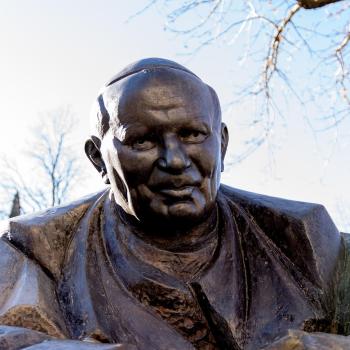In one poll after another, Tea Party activists and sympathizers claim that they are primarily motivated by concern for the rapid expansion of government, for the mountains beyond mountains of debt accruing to our collective account, and for an economy that has been deeply damaged by such government mismanagement. In the liberal interpretation, however, what really motivates the Tea Party is the Black Man in the White House and the vanishing white hegemony.
If the Democrats had properly understood the Tea Party movement, and if they had seen the water coming to a low boil during the Bush administration, they might have avoided their present fate. There are two steps to their misunderstanding of the Tea Party. First, the Bush administration was wrongly viewed as thoroughly and quintessentially conservative. Second, the public’s eventual rejection of the Bush administration was viewed as a repudiation of conservatism and a fundamental political realignment of the electorate (perhaps even the basis of a permanent Democratic majority in “America the liberal”). The important point is this: many who now comprise the Tea Party were not Bush die-hards, but disapproved or largely disapproved of the Bush administration’s big-government tendencies. Of course small-government conservatives and independents, when Obama took those tendencies and magnified them threefold, went from frustration to outrage.
To take the first point, President Bush was alternately viewed as a scheming arch-conservative or else a congenial dunce manipulated by scheming arch-conservatives. In his famed “Case for Bush Hatred” in 2003, Jonathan Chait (in spite of the fact that Bush had increased government spending in his first three years at a rate unseen since Lyndon B. Johnson) wrote that “Bush would like to roll back the federal government’s spending to something resembling its pre-New Deal state.” James Traub concurred in the New York Times magazine, writing that “today’s Republican party is arguably the most extreme -- the furthest from the center -- of any governing majority in the nation’s history.” Examples could be added, but anyone who remembers the Bush administration will surely recall that he was painted as conservatism’s avatar.
The point is not exactly that President Bush was not a conservative, but that his administration precipitated a crisis of conservative identity within the Republican coalition. While Bush could identify with conservatives culturally from Kennebunk to Crawford, and while his judicial appointments and stances on ethical issues gave conservatives reason to support him, he took an activist view of government in the foreign sphere, leveraging the American military to transform the world order in pursuit of democracy, and in the domestic sphere, leveraging the American government to transform the social order in pursuit of conservative virtues.
When Governor Bush articulated his vision for “compassionate conservatism” at a speech to the Manhattan Institute in 1999, he rejected the typical Republican “disdain for government,” and sided with Benjamin Franklin, arguing that “the general opinion of the goodness of government” is foundational to America. The government must concern itself with the “human problems that persist in the shadow of affluence,” and conservative ideals should be utilized in the interest of “greater justice, less suffering, more opportunity.” Bush even criticized the Republican-controlled Congress for “balancing the budget on the backs of the poor.” Instead, the showcase for his compassionate conservative government was to be his education plan, which would not shrink or dismantle the Department of Education but would use it to deliver substantial sums of money to vouchers and charter schools, spurring competition for federal dollars in order to fund a free market reform of the American educational system.
This was not mere posturing. Compassionate conservatism was put into action. The Bush administration achieved its most notable domestic victories in Congress -- from the tax cuts to No Child Left Behind, the prescription drug benefits for seniors, support for faith-based organizations, and its expansion of the national security apparatus -- with substantial Democratic support, and all save the tax cuts expanded government influence. As Fred Barnes noted in 2003, Bush was forming what Irving Kristol called “the conservative welfare state.” Or as David Brooks wrote in 2005, Bush will “spend heaps of federal dollars” if he can direct them to “programs that enhance individual initiative and personal responsibility.” The conservative ends justified the liberal means.





